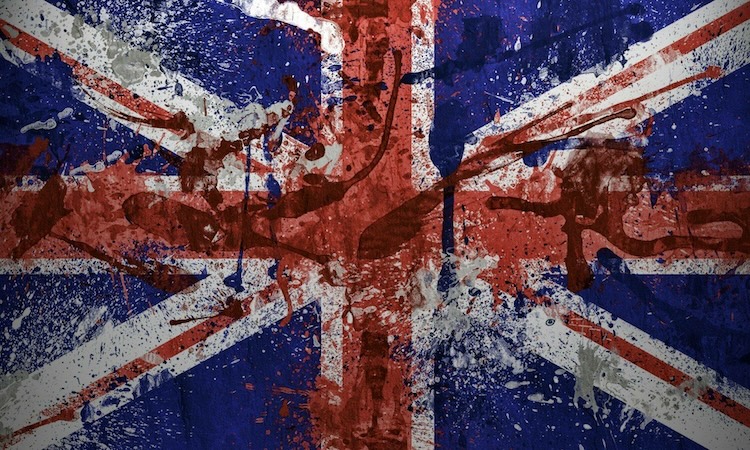We regularly report on published reports from various bodies that show the (almost) incredible rise in the share of wealth and debt of different classes, regions and countries in order to try to open the eyes of workers to the reality of capitalist and imperialist exploitation.
In 2006, the Wealth and Assets Survey (WAS) was launched by the Office for National Statistics (ONS) as a biennial survey, the latest of which, covering 2016-18, has just been released. The sample used is from Great Britain only and compares approximately 30,000 households.
Since its launch, as you would expect, the survey has shown an ever-widening gap between the richest and the poorest in Britain, with those in between going at a slower speed towards whichever point they are nearest, with those in the middle being almost stagnant or slipping very slowly back towards the poorest.
As with all things, there are exceptions to this general trend: a big lottery winner from the poorest section may be shot forward towards the middle or beyond at a rapid speed while a millionaire may lose their wealth instantly from a blip on the stock exchange or a business failure, but, generally speaking, the trends outlined above are accurate.
Poor households increasingly indebted
Wealth inequality (the process whereby the extreme points occupied by the richest and the poorest move further away from one other) has increased since the survey started in 2006 as the burden of debt has fallen hardest on the poor.
Total across-the-board household debt in Great Britain was £1.28tn from April 2016 to March 2018, of which £119bn (9 percent) was financial debt and £1.16tn (91 percent) was property debt (mortgages and equity release). The vast majority of the financial debt is owing to hire purchase (HP), including credit and store cards (up by £6bn), and student loans (up by £7bn).
This £119bn of financial debt is mostly found in the poorer half of the population, while the £1.16tn in in property debt is distributed amongst the entire population.
By and large, the rich don’t use HP to buy clothing, furnishings, etc, as it costs so much that way and they can afford to buy without it. The poor, however, don’t usually have the luxury of large bank balances, and so have to turn to HP methods of payment when they need household goods, and in some cases even for clothing etc, spreading their payments over a longer period.
Hire purchase or store credit can make goods seem more ‘affordable’ to the poor, but the buyer often ends up paying two or three times the original price. Those at the richer end clearly have no need to make use of this plainly false ‘economy’, and tend not to need student loans either.
Where all are likely to turn to borrowing from banks is in the purchase of property. For the poor, this may be to purchase a small house, although for most of the poorest rented property is the only option, so most home mortgages gather around the middle of the spectrum, while for the extreme rich a property loan might be to buy a grand home, multiple homes, business properties, or as finance to keep a business going.
These loans are often subject to tax relief (especially the bigger ones), making them very interesting to the super-rich, whose wealth is rarely sitting in bank accounts doing nothing.
During the period from April 2016 to March 2018, total debt was three times larger than total wealth for those in the lowest eighth of the wealth spectrum, while total wealth was larger than total debt to varying degrees amongst the upper half.
Four percent of households in that two-year timeframe were identified by the survey as having ‘problem debt’, and these households were more likely to rent their home (66 percent renting compared with 34 percent for all households) and have an unemployed household head (6 percent compared with 1 percent overall).
During the period April 2016 to March 2018, of all the households experiencing property debt, 7 percent considered their property debt to be a “heavy burden” and 30 percent considered it to be “somewhat of a burden”. As the WAS survey only displays the property debt burden for households that are not in arrears on their mortgage, it has to be said that the percentages of both these groups would be very much higher if those in arrears were shown.
Distribution of private wealth
The richest 10 percent of households own 44.6 percent of private wealth in Britain, while the poorest 30 percent have less than 2 percent. The poorest ten percent have £18bn of non-property debt (credit cards, overdrafts, HP, etc) while the richest ten percent only have £11bn.
The WAS survey has definite limits, since it measures a household’s wealth and debt without measuring income, unemployment, or any regional variations in pricing, but it is still a strong indicator of Britain’s class divide.
Household wealth alters according to the class of the households in question, so areas that have extremely large numbers of working-class people and high unemployment, such as the north-east and the east Midlands, now have a combined wealth level that is below what it was in 2006-08.
Other areas, such as London, which include both the wealthiest and the poorest, are distorted because the average comes out quite high. The same is true to a lesser extent of the south-east, where higher than average numbers of extremely wealthy, and even a large group of not rich but financially comfortable, rub shoulders with some very poverty-stricken people.
Torsten Bell, the director of the Resolution Foundation said of the latest WAS survey: “You can thank lower home ownership for the trend of housing wealth becoming more unequal,” adding; “The latest ONS data shows that the UK’s wealth is both huge and hugely unequal … Forget which party is promising you a tax cut or extra teachers today … this long-term trend of wealth rising faster than incomes is reshaping Britain.”
The executive director of Tax Justice UK, a research and campaign group, Robert Palmer, pointed out: “Wealth inequality has increased over the last decade. This has real-world consequences. Access to wealth gives you more life opportunities and better health.”
We, on the other hand, must never tire of telling people that the political system that we live under (capitalist imperialism) is the cause not only of the fabulous wealth of a tiny handful of leeches who live by exploiting the masses, but is the cause also of the misery, exploitation, ill health, etc that the mass of the workers experience to a greater degree year upon year.
Only a workers’ revolution that replaces this parasitic set-up with a socialist planned economy can provide the solution – an economy that is geared towards providing a decent standard of living for all workers, and which will lay the foundations for a future world of communist peace and plenty.












